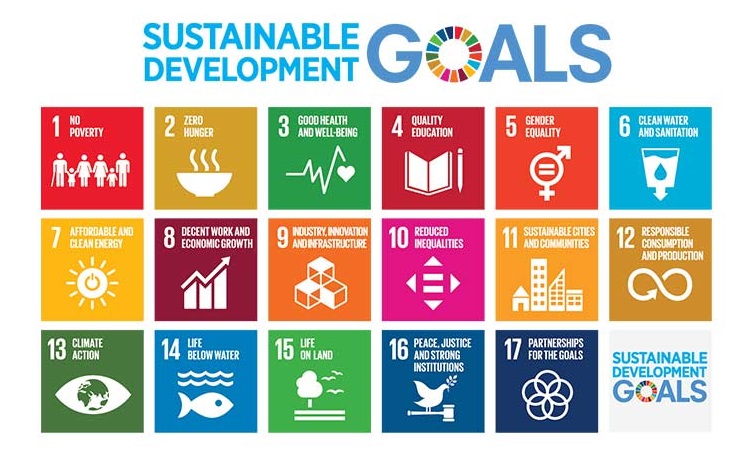Forgetting the big picture when considering sustainability
Why do we consistently get lost in the detail and forget the bigger picture when considering sustainability? James York, Costain Group Corporate Responsibility Manager, considers this question.
A recurring sustainability conversation I find myself involved in is around Costain's company car fleet. This conversation normally starts with: “If Costain are serious about reducing CO2 emissions why do we not have Teslas (or other electric vehicles) in our company car fleet?” I believe this conversation occurs because people don’t fully understand what sustainability really is.
My initial response in this conversation is to accept that we could spend more money on our car fleet, perhaps making some difference to our total emissions. I do stress though that while I too would like a Tesla, we have missed the bigger picture. Surely we should be thinking about alternative ways to travel or even better, using the technology that we all have available to us to prevent the need to travel at all?
The conversation ends with me suggesting that if we did have additional resource to spend on a lower emitting car fleet, I still wouldn’t spend the money on premium electric vehicles.
This often raises eyebrows until I explain that if we were to invest an arbitrary sum of £500,000 in research on carbon capture or HGV platooning we could potentially make a much more significant and sustainable impact to UK CO2 emissions.
If you take out the specific details of this conversation, the theme of delving straight into the micro level detail is very common and as such perhaps also clouds our understanding of how we all contribute to the UN Sustainable Development Goals (SDGs).
I don’t mind admitting that I too also found myself lost in the detail of all 17 SDGs, trying to develop plans for each goal. While my approach was not wrong and we do as an industry all contribute directly or indirectly to all 17 goals, our biggest influence is actually with 3, perhaps 4 – depending on your business.
By having a clear focus towards the SDGs that directly align with your company’s purpose you can begin to contribute to national solutions for the SDGs that I believe are most important for our industry: clean water and sanitation (SDG6), affordable clean energy (SDG7) and industry, innovation and infrastructure (SDG9).
So the next time someone asks you what sustainability means, celebrate the amazing contribution engineers play towards the UN SDGs and avoid the temptation of going into the detail.
One of the challenges I face as a sustainability professional is communicating such a broad spectrum of issues, priorities and the resulting actions that have been taken, to a wide group of stakeholders.
I am really pleased that Costain has released its inaugural sustainability report because this helps me do just that, both within and outside the company. By bringing to life how we are prioritising material sustainability issues, reporting against our targets and providing context with the SDGs, I hope we can move away from thinking that the best answer to all sustainability questions is always an employee car fleet of Teslas.
In October 2018, ICE together with the World Federation of Engineering Organisations are holding the first Global Engineering Congress to agree a worldwide response to deliver the UN Sustainable Development Goals.
Find out more and book your place at the GEC
This article was originally published here by ICE on 26 April 2018. It was written by James York, Costain Group Corporate Responsibility Manager.
--The Institution of Civil Engineers
[edit] Related articles on Designing Buildings Wiki
Featured articles and news
RTPI leader to become new CIOB Chief Executive Officer
Dr Victoria Hills MRTPI, FICE to take over after Caroline Gumble’s departure.
Social and affordable housing, a long term plan for delivery
The “Delivering a Decade of Renewal for Social and Affordable Housing” strategy sets out future path.
A change to adoptive architecture
Effects of global weather warming on architectural detailing, material choice and human interaction.
The proposed publicly owned and backed subsidiary of Homes England, to facilitate new homes.
How big is the problem and what can we do to mitigate the effects?
Overheating guidance and tools for building designers
A number of cool guides to help with the heat.
The UK's Modern Industrial Strategy: A 10 year plan
Previous consultation criticism, current key elements and general support with some persisting reservations.
Building Safety Regulator reforms
New roles, new staff and a new fast track service pave the way for a single construction regulator.
Architectural Technologist CPDs and Communications
CIAT CPD… and how you can do it!
Cooling centres and cool spaces
Managing extreme heat in cities by directing the public to places for heat stress relief and water sources.
Winter gardens: A brief history and warm variations
Extending the season with glass in different forms and terms.
Restoring Great Yarmouth's Winter Gardens
Transforming one of the least sustainable constructions imaginable.
Construction Skills Mission Board launch sector drive
Newly formed government and industry collaboration set strategy for recruiting an additional 100,000 construction workers a year.
New Architects Code comes into effect in September 2025
ARB Architects Code of Conduct and Practice available with ongoing consultation regarding guidance.
Welsh Skills Body (Medr) launches ambitious plan
The new skills body brings together funding and regulation of tertiary education and research for the devolved nation.
Paul Gandy FCIOB announced as next CIOB President
Former Tilbury Douglas CEO takes helm.
UK Infrastructure: A 10 Year Strategy. In brief with reactions
With the National Infrastructure and Service Transformation Authority (NISTA).
























